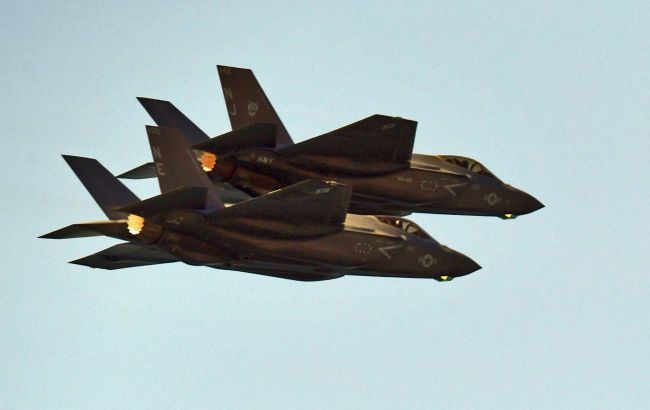NATO prepares to strike Russian jets violating its airspace – The Times
 Photo: F-35s destroy Russian iron (Getty Images)
Photo: F-35s destroy Russian iron (Getty Images)
NATO is preparing to tighten the rules on the use of force against Russia. This involves a transition from a patrol mission to a full-fledged air defense system, according to The Times.
According to one of the alliance's senior commanders, this will enable Russian aircraft violating airspace to be shot down.
Currently, airspace patrol squadrons are primarily tasked with escorting Russian military aircraft that intrude into the allies' airspace, except in cases where they pose a clear military threat.
Russia's air provocations
In recent weeks, Russian drones and fighter jets have been recorded violating the airspace of Poland, Romania, and Estonia. Military bases and airports in other countries have also repeatedly been subject to suspicious activity.
Over the weekend, new incidents were spotted near the Karup Air Base in Denmark, Vilnius Airport in Lithuania, the Karlskrona Naval Base in Sweden, and the Ørland Air Base in Norway.
In response, NATO announced increased surveillance in the Baltic Sea, including the use of an air defense frigate and a number of reconnaissance systems.
Discussions within alliance
Some countries on the front line have called on NATO to lower the threshold for the use of force. Latvian President Edgars Rinkēvičs said it was time to move the air policing mission in the Baltic states to full air defense.
Rinkēvičs says in an interview with Estonian broadcaster ERR that they are currently relying solely on the airspace patrol mission and need to transition from air policing to a real air defense mission.
NATO Military Committee's position
The Alliance is considering such a move, but no decision has been made yet. The Chairman of the NATO Military Committee, Admiral Giuseppe Cavo Dragone, noted that all incidents are still under investigation.
He emphasizes after a meeting in Riga that, given those incursions were fairly recent events, they were all still under investigation and that, of course, a key element was still needed — establishing attribution — adding that he would say it was too early for that.
Allies' reaction and risks
Some NATO members fear an excessive reaction to Russian provocations. However, over the past week, the alliance's rhetoric toward Moscow has become tougher.
Following Donald Trump's statements about the need to shoot down aircraft that violate borders, NATO Secretary General Mark Rutte said that this was an appropriate response, if necessary.
Diplomats from the UK, France, and Germany visited Moscow and warned that the alliance's statements were not empty words.
Serious incidents
On September 10, about 20 Russian drones invaded Poland, several of them heading for the Lask airbase, where American F-35s are stationed.
A high-ranking military official said that Russia was trying to use the Zapad exercises in Belarus to put pressure on the eastern flank.
The interlocutor says that it had been a test, that the Russians had failed it, and that if they had succeeded, completely different actions could have been expected during the exercises
Violations in Estonia
On September 19, three Russian MiG-31s entered Estonian airspace. Local authorities said the planes flew about 6 miles into the territory and remained there for 12 minutes before being forced out by Italian F-35s.
However, NATO air patrol mission commander Lt. Col. Gaetano Farina said the planes were intercepted over land and were heading towards Tallinn.
Wall of drones and new measures
The UK plans to create a wall of drones on NATO's eastern flank. Defense Minister John Healey said the Octopus project involves the mass production of drones and their transfer to Ukraine.
Denmark also banned all civilian drone flights for a week ahead of the EU summit. Transport Minister Thomas Danielsen explained that in this way, they eliminate the risk of confusion between hostile and legitimate drones.
Germany sent troops with anti-drone technology to Copenhagen. The air defense frigate Hamburg, previously attacked by Russian reconnaissance aircraft, has also been transferred to Denmark.
Defense of Eastern Europe
Poland has increased its troop strength near the border with Belarus to 7,000. During the Zapad exercises, the border was completely closed.
NATO is working with the EU to create a drone wall along the external borders of Poland and the Baltic states. The plan includes multi-level detection systems and air defense weapons ranging from machine guns to Patriot missiles.
EU Defense Commissioner Andrius Kubilius said that the first elements of the defense line will be deployed within 12 months.
Ukrainian President Volodymyr Zelenskyy is convinced that NATO member states should have shot down all Russian drones and aircraft that violated their airspace.
According to Bloomberg, European diplomats privately warned the Kremlin that the next provocation involving Russian aircraft would result in their destruction.

